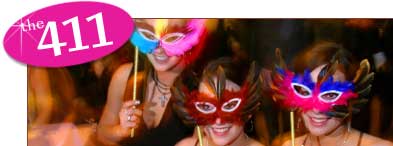The History Of Mardi Gras

Mardi Gras history is an interesting story. ![]() Though Mardi Gras as we know it originates in Paris, many believe that Mardi Gras' roots predate even the French celebration. Lupercalia was a pastoral festival held around February 15th in Rome to banish evil spirits and bring health and fertility to the city. The Church was having trouble convincing the populous to give up the pagan celebration, so they repurposed the “Carnival” as a celebration before the beginning of Lent.
Though Mardi Gras as we know it originates in Paris, many believe that Mardi Gras' roots predate even the French celebration. Lupercalia was a pastoral festival held around February 15th in Rome to banish evil spirits and bring health and fertility to the city. The Church was having trouble convincing the populous to give up the pagan celebration, so they repurposed the “Carnival” as a celebration before the beginning of Lent.
Mardi Gras came to America in 1699 with the French explorer Iberville. Mardi Gras had been celebrated in Paris since the Middle Ages, where it is a major holiday. Iberville sailed into the Gulf of Mexico, from where he launched an expedition up the Mississippi River. On March 3 of 1699, Iberville had set up a camp on the west bank of the river about 60 miles south of where New Orleans is today. To honor the celebration going on in France, they christened the site Point du Mardi Gras.
In the early 1700's the history of Mardi Gras became a bit more formal. Louisiana's Governor The Marquis de Vaudreuil stated holding elegant society balls in New Orleans. Eventually the celebration started to spill outside into the streets.
By the early 1800's, the public outdoor celebration of Mardi Gras consisted of masked revelers walking through the streets, or traveling costumed in carriages and on horseback. However, the first documented Mardi Gras “parade” was not until 1837. With identities hidden behind masks, some people behaved so raucously that “masking” in the street was deemed illegal for a time!
Fortunately, Mardi Gras in New Orleans was saved by the formation of the Comus society in 1857. The men organized the carnival and proved that it could be a harmless and merry celebration for the city. Comus was the first of the Mardi Gras “krewes” and established many of the traditions of Mardi Gras.
the Rex organization
The group of young men who founded the Rex Organization hoped not only to entertain the Grand Duke, but also to create a daytime parade that would be attractive and fun for the citizens of the city and their guests. True to the Rex motto, "Pro Bono Publico" —for the public good, they succeeded beyond their hopes. They selected one of their members, Lewis J. Solomon, to be the first Rex, King of Carnival. Before he could begin his reign he had to borrow a crown, scepter, and costume from an actor who happened to be performing in town at the time.
Colors of Mardi Gras
The official colors of Mardi Gras, purple, green, and gold, have been used since Rex first appeared. It is not known if there was an intended symbolism to the colors at the beginning. Twenty years later the parade's theme "The Symbolism of Colors" suggested that purple, green, and gold symbolized justice, faith, and power, respectively. The Rex flag diagonally displays these colors, along with a crown in the center.
history of King Cake
Today king cake is synonymous with Mardi Gras. January 6, the Twelfth Night after Christmas, is also the day Mardi Gras season begins. The tradition of king cake dates back to the Middle Ages when it was served at Twelfth Night celebrations, in honor of the Three Wise Men (or kings) who followed the North Star to find the Christ Child.
King cake is made of braided Danish pastry and cinnamon, and it’s topped with Mardi Gras colored icing. Sometimes there is a cream cheese or fruit filling. In every king cake there is a tiny plastic baby hidden in the dough. Whoever finds the baby in their piece of cake is in charge of buying the next king cake or hosting the next king cake party.




